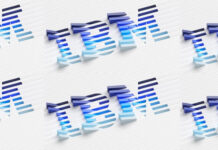Interview. Hyper-converged infrastructure supplier Nutanix has good prospects with a newly minted Cisco partnership, current Nvidia relationship, and looming profitability.
Update: Nutanix confirmed it doesn’t support GPUDirect but is considering future support. 8 Sept 2023.
The firm’s software-defined infrastructure software virtualizes on-prem servers and their storage and network connections, as well as running in the public clouds. It creates a hybrid and multi-cloud data platform on which to run applications and is the main alternative to VMware with its vSAN and VMware Cloud Foundation offering.
Broadcom’s pending acquisition of VMware has raised doubts about VMware’s future development strategy and general situation. Nutanix is poised to capitalize on such customer concerns, has set up a new route to market with Cisco, and has a strong relationship with Nvidia that’s relevant to customers looking to develop their AI/ML capabilities. These three factors are combining with Nutanix’s improvement in its business operating efficiency and direction to bring profitability and maturity to Nutanix.
We asked Nutanix CEO Rajiv Ramswami some questions about these topics, and edited the overall conversation for readability.

Blocks & Files: I wondered whether you thought Nutanix and Dell were both capitalizing or benefiting from doubts over Broadcom’s acquisition of VMware?
Rajiv Ramswami: I would say for that it’s still early days for us. We’ve certainly seen Dell change their positioning from how they used to lead with VxRail before. Not anymore. Now, it’s much more than PowerFlex. And we’ve seen that certainly happened over the last year.
Now, I think, we certainly are seeing a lot of interest from customers. There’s no doubt about that. And we’ve seen some deals starting to close as well – and probably some large ones, you know, seven figure ACV deal with a Fortune 500 company this last quarter. But what remains to be seen here is how many of these engagements actually result in a significant transaction for us [versus] using us as leverage to just try to extract more from VMware when it comes to a price negotiation.
Also, many of these customers have signed up for multi release with VMware to protect themselves prior to the Broadcom deal closing. I think long term this is definitely going to be in our favor. We will see more opportunities as a result of this.
Blocks & Files: How do you see Nutanix competing with external storage vendors? My suspicion is that customers decide whether they’re going to use hyperconverged infrastructure, or not, and then acquire separate compute, separate networking, and separate storage. And you come in after they’ve made that decision. Is that right?
Rajiv Ramswami: So I would agree on the first part of what you said, but not on the second part. The customers have those two choices. They can stick with traditional three tier systems – separate compute, storage, and network – or they can go with hyperconverged, but we’re a big factor in helping them influence that decision.
It’s not like they make that decision up front and then they just say OK, I decided to go HCI and then we’ll look at Nutanix. We are an integral part of saying, look at the benefits of one versus the other. In fact, as part of our selling motion is, “Hey, we can do this better than three tier. And here’s why we can produce a total cost of ownership, we can get a comparable, if not better performance. And many of these storage arrays, we can also provide a platform for hybrid cloud.”
So we go into that motion as actually a core selling motion. We influence a customer’s choice of whether they go with a traditional array, or they try and come to HCI.
Blocks & Files: Do subscription deals like HPE’s GreenLake change this?
Rajiv Ramswami: We have actually had deals through HPE and Greenlake, where we are part of that solution as well with hyperconverged. Now, GreenLake to me doesn’t change the dynamic of HCI [versus] separate management, compute, storage, network. It’s just putting a subscription overlay on top of that. It doesn’t really fundamentally change the dynamic of whether you go three tier, or whether you go hyperconverged. In either scenario, you can put it in like an overlay on top of it to consume it in a subscription, pay as you go monthly or annually.
Blocks & Files: Would you be able to position Cisco and Nutanix versus Cisco’s HyperFlex offering?
Rajiv Ramswami: We’re the market leader when it comes to hyperconverged. And Cisco has tried with their own solutions for quite a while, many years, and the market share data clearly indicates that we are by far the market share leader compared to their market share.
The one thing about Cisco, and I spent many years of my life there, is that they understand what could have been in the market, and they want to be a market leader. They don’t want to be a market follower.
So, I think that they made the right decision by saying, look, if we do this, and partner with Nutanix, we can make a lot more in the market, with our customers. And it’s the right thing for the customers because they are really likely to choose Nutanix. They’re winning, so why not? Let’s make that easier. Let’s offer that as a solution. And that’s what drove this relationship.
it’s good for the customer, because now they get to buy a complete solution from Cisco.
Cisco is perfectly complementary to us. They don’t have their own storage arrays and stuff like that, right? … You can take your best in class from us and best in class from them, put it together and really get a winning solution in the market. So it makes sense for the customer, it makes sense for Cisco, it makes sense for us.
Blocks & Files: Could you give your view on NVidia GPUs in Nutanix’s GPT-in-a-Box offering?
Rajiv Ramswami: GPT-in-a-box runs on top of our standard qualified hardware platforms, which are servers with GPUs – Nvidia GPUs. As part of this we are virtualizing the GPUs. We are making them accessible. We also support the full immediate GPU asset. And, after getting certified as a partner for Nvidia, it’s very much an integral part of the offering.
Blocks & Files: When do you see Nutanix becoming profitable in a GAAP sense? In the next 12 months?
Rajiv Ramswami: We are certainly profitable on a non-GAAP basis. And we’re generating good free cash flow, ten times more free cash flow this year. The next milestone for us clearly is GAAP profitability. And if you look at the primary difference for us between non-GAAP and GAAP, it is stock-based compensation. And we have been working over the last several years to bring down stock-based compensation as a function of revenue.
We ask you to hold that question till our next Investor Day. We have one coming in next month. And that’s when we plan to give our investors longer term views in terms of what the output looks like, including GAAP profitability.
Comment
Nutanix is in a favorable market situation. The Cisco partnership should bring in a substantial amount of extra business. Broadcom-VMware worries should also increase Nutanix sales over the next few year or so. Its Nvidia partnership should help it ride the AI interest wave and pick up deals from that.
We predict Nutanix will be profitable in the next quarter or two.
Bootnote: Nvidia GPUDirect support
Nutanix supports Nvidia’s vGPU (virtual GPU) software, which virtualizes a GPU. It creates virtual GPUs that can be shared across multiple virtual machines (VM), accessed by any device, anywhere. The vGPU software enables multiple VMs to have simultaneous, direct access to a single physical GPU, using the same Nvidia graphics drivers that are deployed on non-virtualized operating systems.
Nvidia’s GPUDirect enables network adapters and storage drives to directly read and write to/from GPU memory, without passing through a server host’s CPU and memory as is the case with traditional storage I/O. This speeds data transfer between a server’s storage (DAS or external SAN/filer) and a GPU’s memory.
GPUDirect component technologies – GPUDirect Storage, GPUDirect Remote Direct Memory Access (RDMA), GPUDirect Peer to Peer (P2P) and GPUDirect Video – are accessed through a set of APIs. The GPUDirect Storage facility enables a direct data path between local or remote storage – such as NVMe or NVMe over Fabric (NVMe-oF) – and GPU memory. It avoids the making of extra and time-consuming copies by the host CPU in a so-called bounce buffer in the CPU’s memory. This enables a direct memory access (DMA) engine near the NIC or storage to move data on a direct path into or out of GPU memory.
VMware’s recently announced Private AI Foundation with Nvidia includes VMware’s vSAN Express Storage Architecture, which will provide NVMe storage and supports GPUDirect storage over RDMA, allowing for direct – and so faster – I/O transfer from storage to GPUs without CPU involvement. Nvidia GPUDirect partners with systems in production are DDN, Dell EMC, HPE, Hitachi, IBM, Kioxia, Liqid, Micron, NetApp, Samsung, ScaleFlux, SuperMicro, VAST Data and Weka. Pure Storage is not listed and neither is Nutanix.
We think that a GPUDirect support capability will be announced by Nutanix in the future. A company spokesperson said: “Nutanix is currently evaluating future support for Nvidia’s GPUDirect storage access protocol.”







